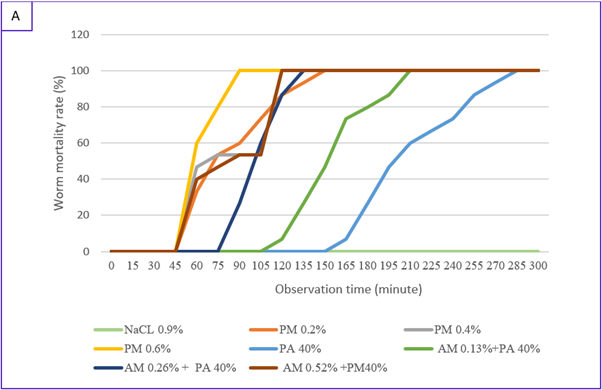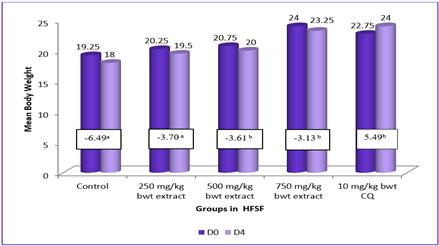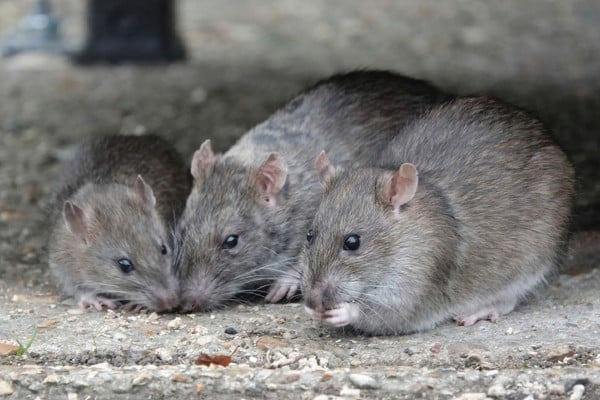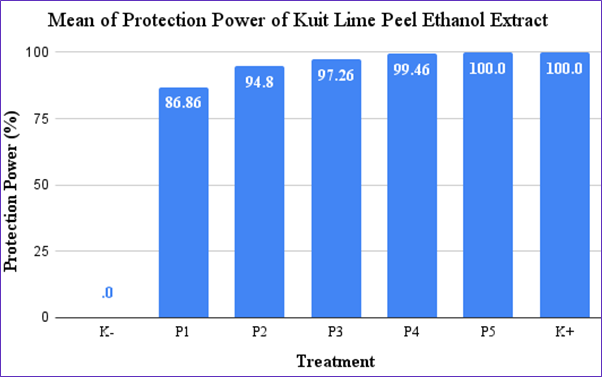Potential Anthelmintic Activity of Pineapple Fruit (Ananas comosus) and Mango Leaves Juice (Mango foliorum) against Ascaridia galli Worms In-Vitro Model

Downloads
Ascaridia galli is a worm that infects the chickens' digestive tract, leading to various problems such as worsening feed efficiency, slowing poultry growth, and increasing mortality. Mango leaves and pineapple fruit were reported to have anthelmintic activity against A. galli. These two plants contain secondary metabolites that were suggested to have synergistic effects. This study aimed to determine the potential activity of combining arumanis mango leaf and pineapple juice against A. galli and evaluate their interaction based on anthelmintic activity profile. The activity of 40% pineapple fruit juice (PA) added with different concentrations of arumanis mango leaf juice (AM) from 0.13%, 0.26%, and 0.52% v/v, and pineapple fruit juice at concentrations 20, 40% v/v were mixed with 0.26% arumanis mango leaf juice. as well as NaCl 0,9% as negative control and pyrantel pamoate 0.2; 0.4; 0.8 % b/v as a positive control respectively were determined. Observation on worm mortality was conducted in 15-minute intervals for 300 minutes. The time-a cumulative mortality rate of worm curve exposed to PA 40 % was shifted to the left in the presence of AM, and AM 0.26 % curve in the presence of PA. The best, LC50, LT50, and L100 were found in AM 0.52 % combined with PA 40%. This finding showed the potential activity of pineapple fruit juice at 40% combined with arumanis mango leaf juice at 0.52 % as the best combination in which anthelmintic activity occurs due to synergism interaction between arumanis mango leaf juice and pineapple fruit juice.
AL-Quraishi, M.A., Al-Musawi, H.S. and AL-Haboobi, Z.A.M. (2020) ‘Pathological Study of Ascaridia galli in poultry’, EurAsian Journal of BioSciences, 14(September), pp. 3327–3329. Available at: https://www.researchgate.net/publication/344602209.
AL-Tameemi, K. and Kabakli, R. (2020) ‘Ascaris Lumbricoides: Epidemiology, Diagnosis, Treatment, and Control’, Asian Journal of Pharmaceutical and Clinical Research, 13(4), pp. 8–11. Available at: https://doi.org/10.22159/ajpcr.2020.v13i4.36930.
Ali, N. et al. (2011) ‘Cytotoxic and Anthelmintic Potential of Crude Saponins Isolated from Achillea Wilhelmsii C. Koch and Teucrium Stocksianum boiss’, BMC Complementary and Alternative Medicine, 11(1), pp. 106. Available at: https://doi.org/10.1186/1472-6882-11-106
Ameen, S.A. (2011) ‘Anthelmintic Efficacy Of Pawpaw (Carica papaya) Seeds In Commercial Layers’, African Journal of Biotechnology, 11(1), pp. 126–130. Available at: https://doi.org/10.5897/ajb10.2040
Badarina, I., Putranto, H.D. and Sulistyowati, E. (2017) ‘In vitro Anthelmintic Activity of Coffee Husk Extract Fermented with Pleurotus ostreatus for Ascaridia galli’, Animal Production, 19(1), pp. 55–60. Available at: https://doi.org/10.20884/1.jap.2017.19.1.595
Cho-Ngwa, F. et al. (2010) ‘Selective Activity Of Extracts of Margaritaria discoidea and Homalium africanum on Onchocerca ochengi’, BMC Complementary and Alternative Medicine, 10(62), pp. 1–7. Available at: https://doi.org/10.1186/1472-6882-10-62
Feyera, T. et al. (2022) ‘Anthelmintic Efficacy Evaluation Against Different Developmental Stages of Ascaridia galli Following Individual Or Group Administration In Artificially Trickle-Infected Chickens’, Veterinary Parasitology, 301, pp. 109636. Available at: https://doi.org/10.1016/J.VETPAR.2021.109636
Fudhola, F.R., Ridwan, Y. and Purwono, R.M. (2024) ‘The Potential Of Bromelain Enzyme As A Safe Anthelmintic and Minimume Residues For Livestock Commodities’, in IOP Conference Series: Earth and Environmental Science. Institute of Physics. Available at: https://doi.org/10.1088/1755-1315/1359/1/012133
Hanani, E. (2015) Analisis Fitokimia. 1st ed. Edited by T.V.D. Hadinata and A. Hanif. Jakarta, Indonesia: Buku Kedokteran EGC. ISBN: 978-979-044-606-9.
Kusuma, S.B. et al. (2021) ‘Identification of Helminth Parasites Diversity on Laying Chicken In Jember District (East Java-Indonesia)’, in IOP Conference Series: Earth and Environmental Science. IOP Publishing Ltd. Available at: https://doi.org/10.1088/1755-1315/672/1/012045
Kusumadewi, S. et al. (2020) ‘Prevalensi Kecacingan pada Usus Ayam Kampung di Pasar Tradisional Jakarta dan Kota Bogor Prevalence of Gastrointestinal Endoparasites in Free-range chicken at Traditional Market Jakarta and Bogor’, Acta Veterinaria Indonesia, 8(1), pp. 1–9. Available at: https://doi.org/10.29244/avi.8.1.1-7
Liu, M., Panda, S.K. and Luyten, W. (2020) ‘Plant-Based Natural Products for The Discovery and Development of Novel Anthelmintics Against Nematodes’, Biomolecules. MDPI AG, pp. 1–22. Available at: https://doi.org/10.3390/biom10030426
Mighra, B.A. (2017) Uji Effektivitas Daya Anthelmintik Perasan Buah segar dan Infus Buah Nanas (Ananas, Comosus (L.) Merr) terhadap Ascaridia galli in vitro. Fakultas Kedokteran, Universitas Dipenogoro Semarang. Available at: https://doi.org/10.35508/jkv.v5i2.952
Moenek, D. and Oematan, A. (2017) ‘Endoparasit pada Usus Ayam Kampung (Gallus domesticus) (Endoparasites in the Backyard Chicken (Gallus domesticus))’, Jurnal Kajian Veteriner, 5(2), pp. 84–90. Available at: https://ejurnal.undana.ac.id/index.php/JKV/article/view/952/800.
Navarro del Hierro, J. et al. (2018) ‘The Gastrointestinal Behavior Of Saponins And Its Significance For Their Bioavailability And Bioactivities’, Journal of Functional Foods, 40(September 2017), pp. 484–497. Available at: https://doi.org/10.1016/j.jff.2017.11.032
Ndjonka, D. et al. (2011) ‘In vitro activity of Cameroonian and Ghanaian Medicinal Plants On Parasitic (Onchocerca ochengi) and Free-Living (Caenorhabditis elegans) Nematodes’, Journal of Helminthology, 85(3), pp. 304–312. Available at: https://doi.org/10.1017/S0022149X10000635
Ndjonka, D. et al. (2014) ‘Anthelmintic Activity Of Phenolic Acids From The Axlewood Tree Anogeissus leiocarpus on The Filarial Nematode Onchocerca ochengi and Drug-Resistant Strains Of The Free-Living Nematode Caenorhabditis elegans’, Journal of Helminthology, 88(4), pp. 481–488. Available at: https://doi.org/10.1017/S0022149X1300045X
Pabala, M.F. et al. (2017) ‘Prevalensi dan Intensitas Infeksi Cacing Ascaridia galli pada Ayam Buras di Wilayah Bukit Jimbaran, Badung (Prevalence and Intensity of Ascaridia galli Infection To Domestic Chicken in Bukit Jimbaran Area, Badung)’, Indonesia Medicus Veterinus Juni, 6(3), pp. 2477–6637. Available at: https://doi.org/10.19087/imv.2017.6.3
Putra, B., Astuti, K. and Dwinta, I. (2015) ‘Uji In Vitro Ekstrak Etanol Buah Nanas (Ananas comosus (L.) Merr) Terhadap Daya Mortalitas Cacing Gelang Babi (Ascaris suum Goeze)’, Jurnal Farmasi Udayana, 3(2), pp. 82–86. Available at: https://ojs.unud.ac.id/index.php/jfu/article/view/13109
Rianto, L. et al. (2016) ‘Uji Efektivitas Daya Anthelmintik Ekstrak Biji Mentimun (Cucumis sativum, L) Terhadap Cacing Ascaridia galli secara In Vitro’, Indonesia Natural Research Pharmaceutical Journal, 1(1), pp. 67–80. Available at: https://doi.org/10.52447/inspj.v1i1.232
Robiyanto, Kusuma, R. and Untari, E.K. (2018) ‘Potensi Antelmintik Ekstrak Etanol Daun Mangga Arumanis (Mangifera indica L.) pada Cacing Ascaridia galli dan Raillietina tetragona secara In Vitro’, Pharmaceutical Sciences and Research, 5(2), pp. 81–89. Available at: https://doi.org/10.7454/psr.v5i2.4016
Samje, M. et al. (2014) ‘In vitro anti-Onchocerca ochengi Activities of Extracts And Chromatographic Fractions of Craterispermum laurinum and Morinda lucida’, BMC Complementary and Alternative Medicine, 14(1). Available at: https://doi.org/10.1186/1472-6882-14-325
Symeonidou, I. et al. (2018) ‘Botanicals: A Natural Approach To Control Ascaridiosis In Poultry’, Journal of the Hellenic Veterinary Medical Society, 69(1), pp. 711–722. Available at: https://doi.org/10.12681/jhvms.16383
Tabbu, C.R. (2002) Penyakit Ayam dan Penanggulangannya. Penyakit Asal Parasit Non Infeksius dan Etiologi Kompleks. Kanisius. Yogjakarta. ISBN. 978-979-21-0462-2
Tarbiat, B. et al. (2023) ‘A Follow-Up On The Swedish Roundworm Control Program: Strengths and Weaknesses’, Journal of Applied Poultry Research, 32(100356), pp. 1–22. Available at: https://doi.org/10.1016/j.japr.2023.100356
Wahyudi, G. (2015) ‘Uji Aktivitas Antibakteri Infusa Daun Mangga Bacang (Mangifera foetida L.) Terhadap Streptococcus pneumoniae Secara in Vitro’, Jurnal Mahasiswa PSPD FK Universitas Tanjungpura, 3(1). ISSN 2407-4055. Available at: https://jurnal.untan.ac.id/index.php/jfk/article/view/10596.
Yusliana, Y. et al. (2019) ‘Uji Daya Hambat Antibakteri Air Perasan Daging Buah Nanas (Ananas comosus (L) Merr Var. Queen) terhadap Bakteri Salmonella typhi’, Scientia Journal., 8(1), pp. 1–9. Available at: https://doi.org/10.29303/jbt.v20i1.1055
Copyright (c) 2025 Journal of Parasite Science

This work is licensed under a Creative Commons Attribution-NonCommercial-ShareAlike 4.0 International License.
- Every manuscript submitted to must observe the policy and terms set by the Journal of Parasite Science
- Publication rights to manuscript content published by the Journal of Parasite Science is owned by the Journal of Parasite Science with the consent and approval of the author(s) concerned
- Authors and other parties are bound to the Creative Commons Attribution-NonCommercial-ShareAlike 4.0 International License for the published articles, legal formal aspect of journal publication accessibility refers to Creative Commons Attribution-NonCommercial-ShareAlike 4.0 International License (CC BY-NC-SA)
- By submitting the manuscript, the author agrees to the requirement that the copyright of the submitted article will be transferred to Journal of Parasite Science as the publisher of the journal. The intended copyright includes the right to publish articles in various forms (including reprints). journal of parasite science retains the publishing rights to published articles.
































